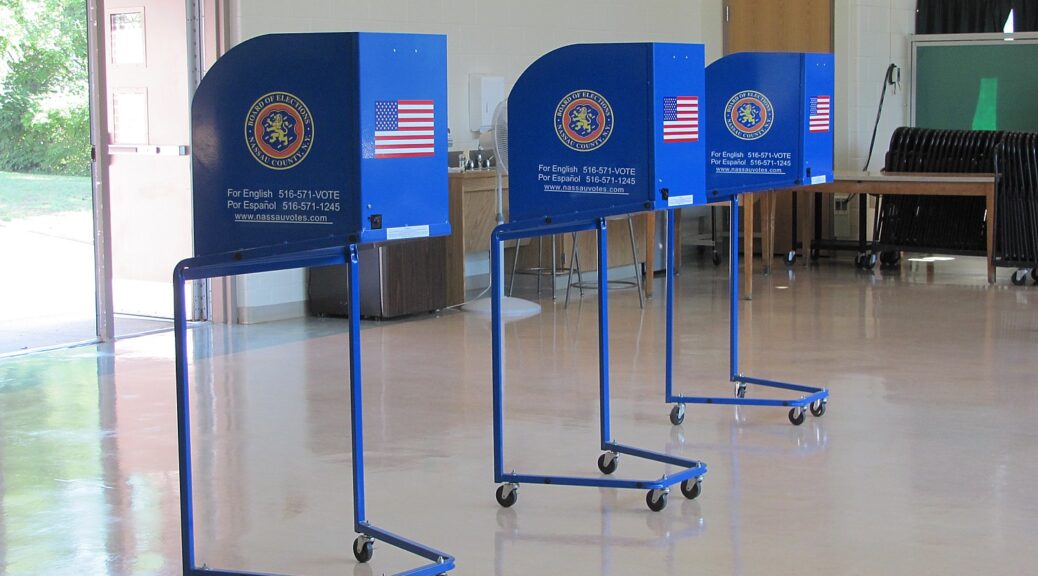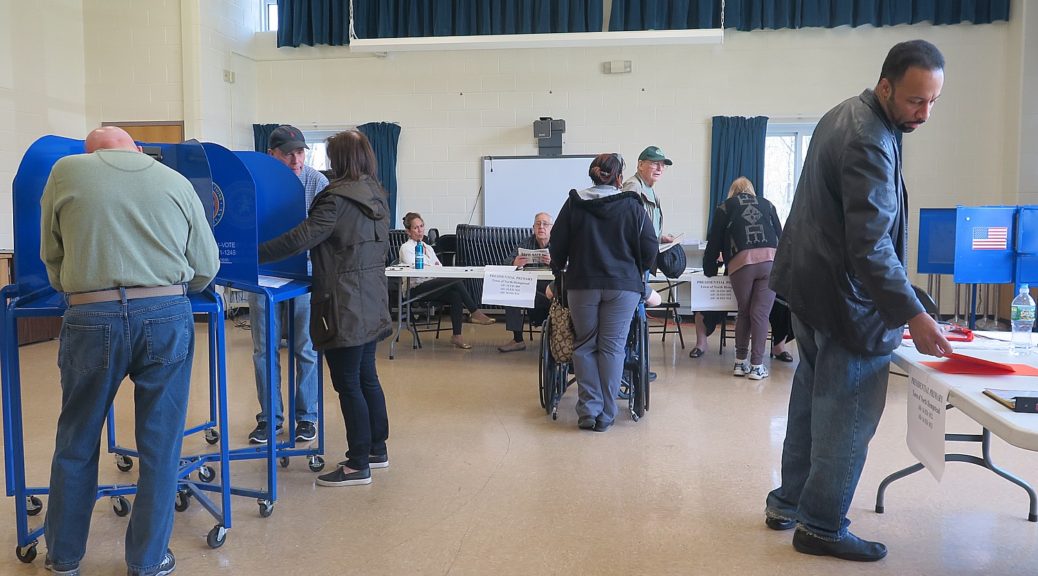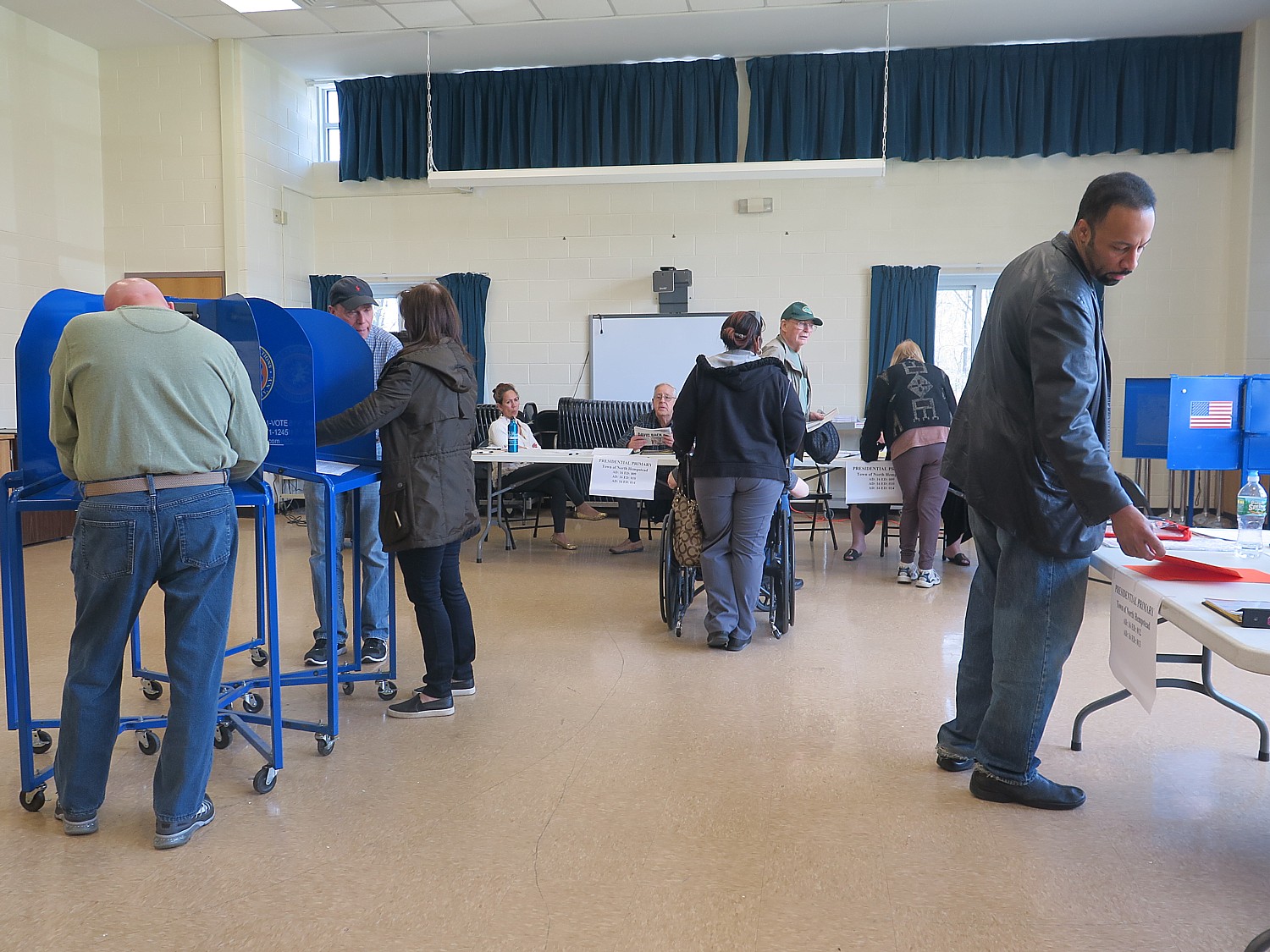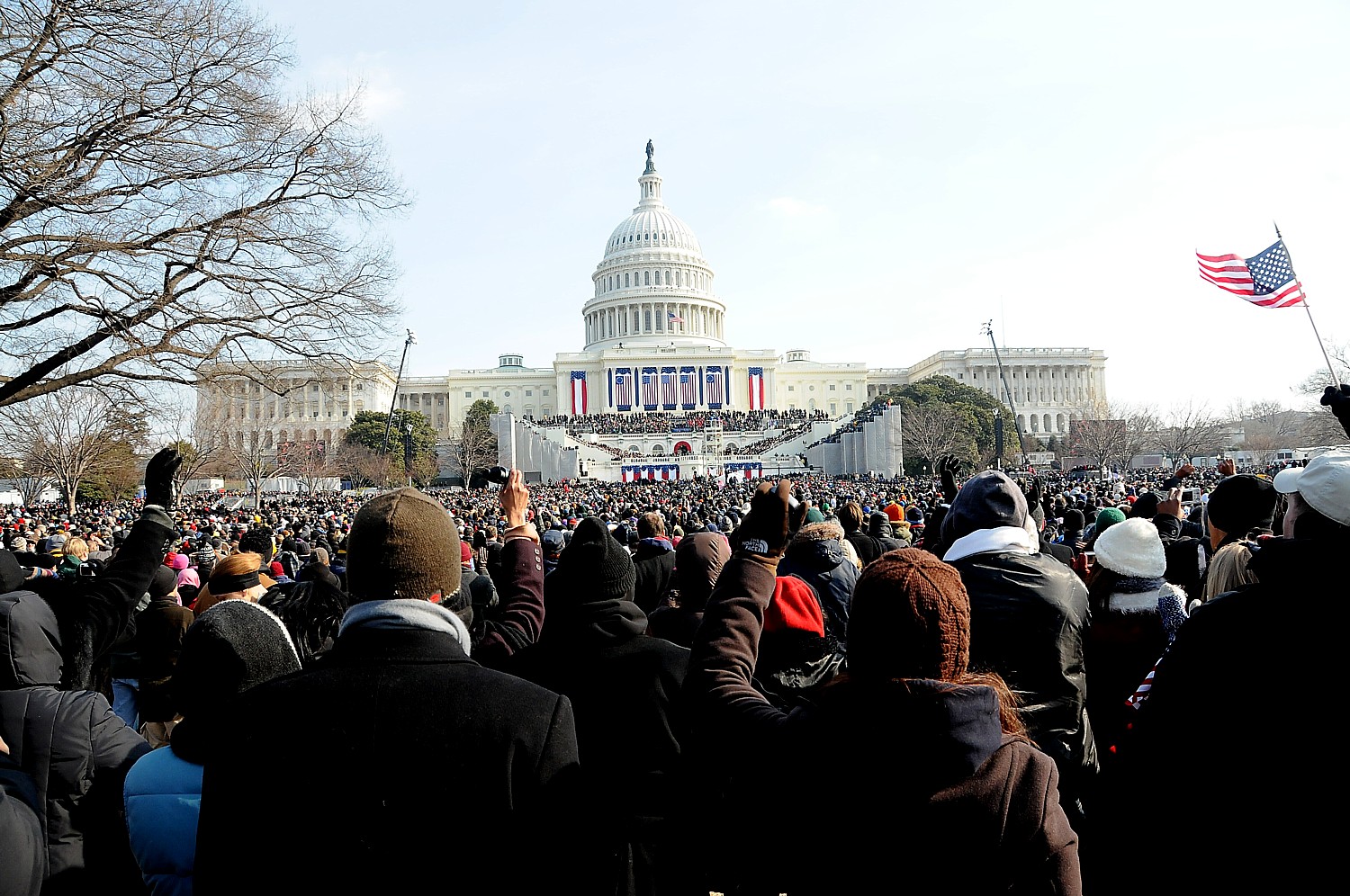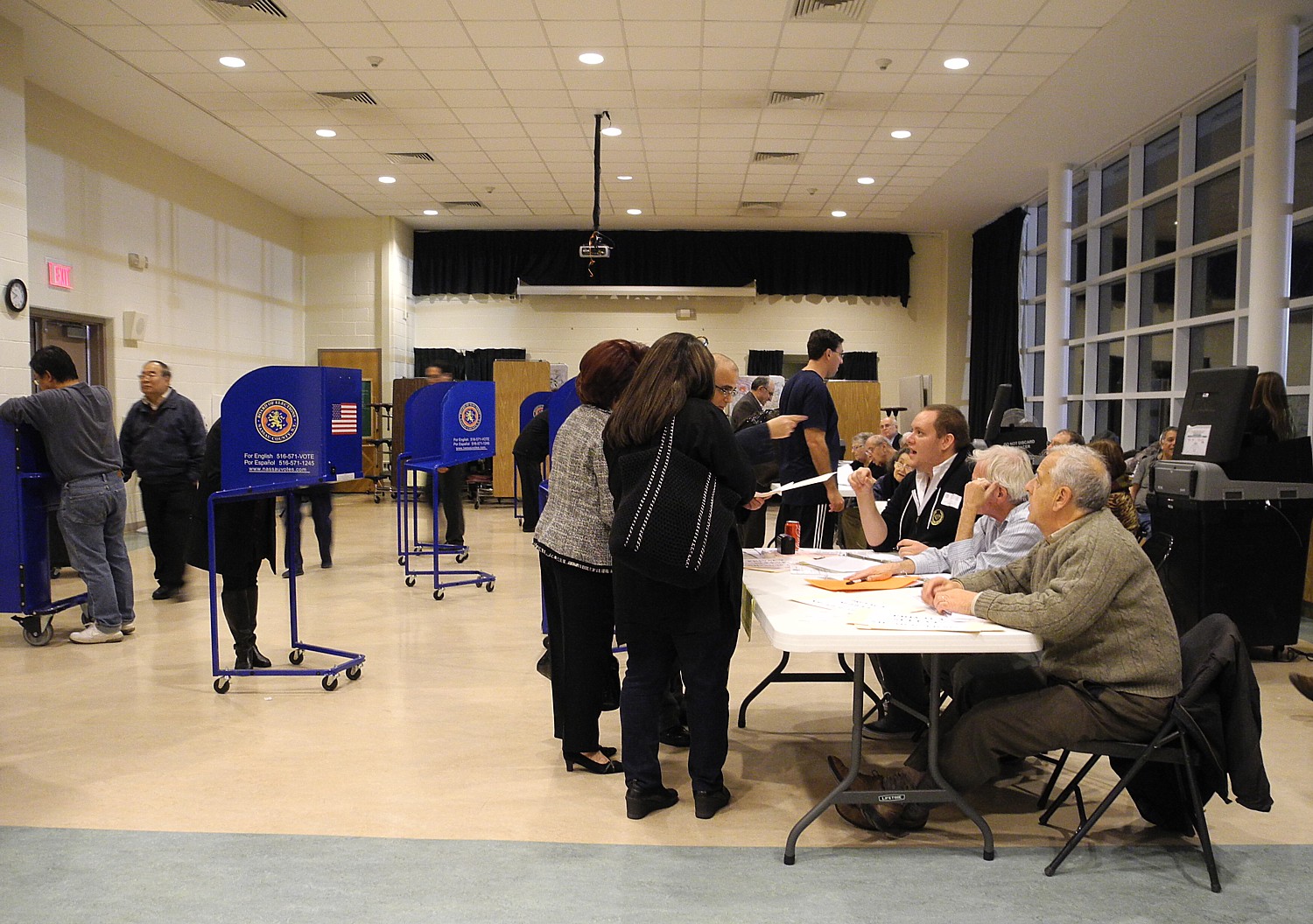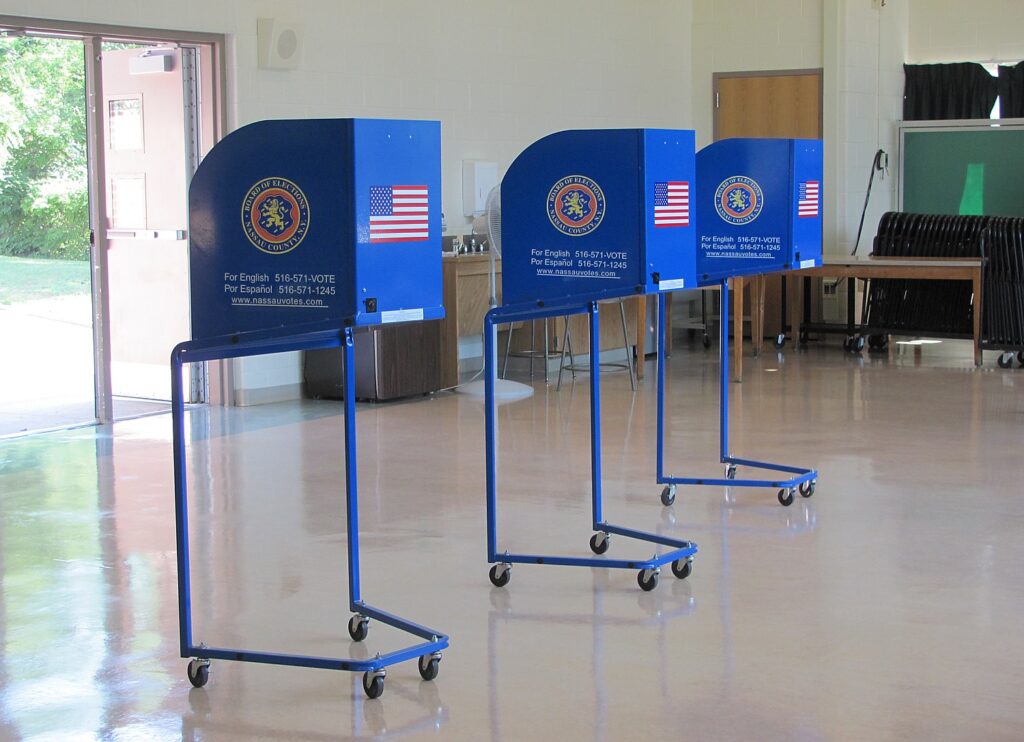
Voters Can Learn More About Absentee Voting And Early Voting In New York By Visiting ny.gov/earlyvote
New York State had long been criticized for having some of the most restrictive rules for voting, resulting in some of the lowest turnout rates in the country. But that has changed with a series of reforms aimed at making it easier to vote, including making absentee voting (vote-by-mail) an option available to all, new early voting, to meet the coronavirus crisis so that casting a vote does not have to be a life-and-death choice between exercising a citizen’s most cherished right, and their health.
In addition, Cuomo issued executive orders allowing registered voters to drop off their completed absentee ballot at a Board of Elections office, early voting location or Election Day voting location without requiring them to wait in line with in-person voters. Boards of elections are required to develop and submit a plan to the State Board of Elections by September 21 and make it publicly available.
Meanwhile, the state is launching a public awareness campaign to ensure New Yorkers know all the ways they can vote in November’s election, including voting early, voting absentee, or voting in person on Election Day.
“Because of COVID, this year New Yorkers have several options when it comes to casting their ballot. You can vote early, vote absentee, or vote in person on Election Day, and I am issuing an executive order to ensure boards of elections have plans in place to safely receive the anticipated additional volume of absentee ballots through in person return,” Governor Cuomo said.”To say this election is the most critical in recent history is understating its importance. We want to make sure every vote in New York is counted and every voice is heard.”
Absentee ballots can be dropped to county boards of elections offices as soon as voters receive their ballot; any early voting location between October 24th and November 1st; and at polling locations on Election Day. By dropping off an absentee ballot at a county board of elections office, early voting site or polling location, New Yorkers can avoid Post Office delays and the need for a stamp.
Most New Yorkers can now request an absentee ballot for the first time under a new law the Governor signed expanding eligibility to all voters who have concerns regarding COVID-19. They should check the “temporary illness” box on their absentee ballot application. To learn more about absentee voting and early voting in New York, visit ny.gov/earlyvote.
The state has launched an absentee ballot portal where voters can directly request an absentee ballot for the upcoming November 3rd election.
Given an expected unprecedented increase in the use of absentee ballots and concerns about the reliability of the United States Postal Service, today’s executive order ensures an expedited, dedicated line for returning absentee ballots in-person, or a contactless drop box in every county.
The state made several sweeping election reform steps in advance of the November 3rd election.
On August 20, Governor Cuomo signed into law a three-part election reform package to make it easier for New Yorkers to vote and be counted in November, including: allowing absentee ballot applications to be submitted to a board of elections immediately; expanding the necessary protections to allow a voter to get an absentee ballot due to risk or fear of illness including COVID-19 and; ensuring all absentee ballots postmarked on or before Election Day or received by a board of elections without a postmark on the day after the election will be counted. Ballots with a postmark demonstrating that they were mailed on or before Election Day will be counted if received by November 10.
On August 24, Governor Cuomo issued an Executive Order to further bolster and support New Yorker’s right to vote by requiring county boards of elections to take the following actions:
- Send a mailing outlining all deadlines for voters by Tuesday, September 8.
- Send staffing plans and needs to the New York State Board of Elections by September 20 so BOE can assist in ensuring adequate coverage.
- Adopt a uniform clarified envelope for absentee ballots and require counties to use it.
- Count votes faster: require all objections to be made by the county board in real time, make sure that boards are ready to count votes and reconcile affidavit and absentee ballots by 48 hours after elections.
- Provide an option for New Yorkers to vote absentee in village, town and special district elections.
“All board of elections make sure they have everything in place, the staff in place, to count the ballots as soon as possible,” Cuomo said. “And the board of elections have to report staffing plans and any needs for additional staff. If they don’t have the staff. Tell us tell us before. So you can get the staff because you have to be able to count the ballots. You have to be able to tabulate the vote. We want it done and we want it done right, but we want it done timely. We don’t want to hear after-the-fact excuses for why you couldn’t do it. Tell us how you’re going to do it before-the-fact, and your staffing plan from the board of elections that will actually do that.
“This election is going to be one of the most critical in modern history. It will be controversial. You already hear the statements questioning the vote, and the accuracy of the vote, and mail-in ballots. We want to make sure that every vote is counted; every voice is heard and that it’s fair and right and accurate.”
“The federal administration has ordered an unprecedented attack on the U.S. Postal Service and with COVID-19 threatening our ability to have safe, in-person voting, these measures are critical to ensuring a successful and fair election at one of the most important moments in our nation’s history,” Governor Cuomo said. “These actions will further break down barriers to democracy and will make it easier for all New Yorkers to exercise their right to vote this November.”
New Laws Will Make It Easier for New Yorkers to Vote and Be Counted in November
S.8015-D/A.10833 Authorizes Voters to Request an Absentee Ballot Due to Risk of Illness, Including COVID
S.8783A/A.10807 Authorizes Voters to Request Absentee Ballots Starting Today
S.8799A/A.10808-A Allows Ballots to Be Postmarked On the Day of the Election, November 3
Senate Majority Leader Andrea Stewart-Cousins said, “Voting access is one of the core foundations of our democracy. With the ongoing COVID-19 pandemic, we must ensure that no New Yorkers feel pressured to put their health and well-being at risk to exercise their Constitutional right to vote. I thank the bill sponsors for advancing this legislation, and my Senate Democratic Majority colleagues for their ongoing
commitment to empower New York voters and Governor Cuomo for signing these bills.”
Assembly Speaker Carl Heastie said, “The Assembly Majority knows that democracy is best served when it is easier, not harder for Americans to vote. But the administration in Washington is once again proving that they do not value these critical democratic institutions, going as far as attacking the U.S. Postal Service to limit access to voting by mail. Here in New York, we will not stand for that. Earlier this year, we passed legislation to expand voters access to mail in voting, and we will continue to fight to make it easier and safer for New Yorkers to exercise their constitutional right to vote, and protect the integrity of our elections.”
Relating to Absentee Ballot Requests Due to Risk of Illness (S.8015-D/A.10833)
This legislation gives voters the right to request an absentee ballot due to risk of illness to themselves or others.
Senator Alessandra Biaggi said, “COVID has upended every aspect of our lives — but we cannot allow it to undermine our democracy and New Yorkers’ sacred right to vote. I introduced S8015D to ensure that no New Yorker will have to choose between their health and fulfilling their civic responsibility. Unfortunately, during the June election too many New Yorkers had to make that very choice because they did not receive their ballots on time. I want to thank Governor Cuomo for signing my bill to provide every New Yorker with the assurance that they can vote via absentee ballot come November and to give the Board of Elections the time they need to prepare. I also want to extend my gratitude to Senate Majority Leader Andrea Stewart-Cousins and my colleagues in the Legislature for their partnership and commitment to protecting our democracy.”
Assemblymember Jeffrey Dinowitz said, “Today is a great day for our democracy in New York State. As we continue to work on ways to increase voter efficacy in the absentee ballot process, I thank Governor Cuomo for signing this bill into law so that New Yorkers do not have to choose between risking public health and fulfilling our civic duty to vote. I am proud that New York State can stand in contrast to our White House administration by taking steps to make it easier and safer to vote, instead of casting political dispersions that erode our core democratic institutions.”
Relating to Absentee Ballot Requests (S.8783A/A.10807)
This legislation authorizes voters to request absentee ballots immediately, 30 days before Election Day, adding almost 7 weeks to the amount of time a voter has to vote by absentee ballot. This legislation eliminates an outdated statutory provision that prevents voters from requesting absentee ballots until 30 days before Election Day. The legislation gives voters reassurance that they will receive and can cast their vote in a timely manner.
Senator Zellnor Myrie said, “With an increasing number of voters planning to vote by absentee ballot this year, it is important to give local boards of election sufficient time to process applications and send out ballots, and maximize the time voters have to complete and return them. This legislation is part of our continued effort to expand access to voting, during the pandemic and beyond. Voters should have full confidence that, whether they use a mailbox or a ballot box, they can exercise their rights safely, securely and without obstacles.”
Assemblymember Al Taylor said, “The COVID-19 health crisis has transformed life as we know it, including how we vote. This year we saw a tenfold increase in absentee ballot requests, with more people than ever choosing to vote by mail to protect the health of their families and community. With this new reality, we must ensure voters can exercise their rights in future elections both safely and efficiently, and that includes receiving absentee ballots in a timely fashion. I am honored to continue the fight to expand and protect voting rights in New York alongside my colleagues as we build upon the progress that’s already been made while helping our neighbors stay safe. Thank you Governor Cuomo for signing this bill into law.”
Relating to Ballots Postmarked on Day of Election (S.8799A/A.10808-A)
This legislation allows ballots to be postmarked on the day of the election, November 3. The legislation also amends election law to allow the Board of Elections to count all absentee ballots that have a time stamp showing it was delivered to the Board of Elections the day after the election but does not have a dated postmark. The Board of Elections shall deem those ballots mailed in a timely fashion.
Senator Michael Gianaris said, “It’s critical we learn the lessons of the primary election and ensure every valid vote counts in November. The bill being signed today will help insulate voters from problems caused by difficulties with the US Postal Service. I’m grateful the Governor is enacting it.”
Assemblymember Rodneyse Bichotte said, “The legislation the governor is signing today will ensure that New Yorkers’ right to participate in the electoral process is protected. We saw unprecedented absentee voter turnout during the primary, but because of financial challenges at the United States Postal Service, many ballots did not receive timely postmarks. We must rise to the occasion and make sure that voters across the state can safely and effectively cast their votes. This legislation will help to address problems with the Post Office, by ensuring that absentee ballots that do not receive a postmark are considered timely if they are received by the Board of Elections the day after an election. This protects the integrity of votes and enfranchises the voter. I thank Gov. Cuomo for signing this bill and my colleagues in the Legislature for supporting New Yorkers by ensuring that their constitutional right to vote is protected.”

